| |
|
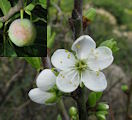 | |
| MaltaWildPlants.com by Stephen Mifsud |

|
| |
|
|
 |  |  |  |
| External Links: |
|
Sisymbrium officinale (Hedge Mustard) |
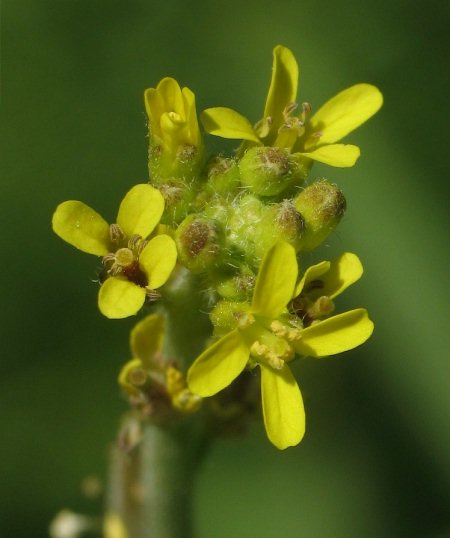
Sisymbrium officinale (BRASSICACEAE.)
Images for this profile are taken from the Maltese Islands after year 2000. |
|
|
| Nomenclature |
Species name : | Sisymbrium officinale (L.) Scop. | Authority : | Carl von Linne, Sweden, (1707 - 1778) ;
Joannes Antonius Scopoli, Italy, (1723 - 1788) | Synonyms :
(basionym or principal syn.) |
|
Plant Family : | Brassicaceae Juss. (= Cruciferae )
(Mustard or Cress Family) | English name(s) : | Hedge Mustard, Tumble Weed, Hedge Wild Mustard | Maltese name(s) : | Mustarda rqiqa, Libsiena | Status for Malta : | Indigenous. Present on the Maltese islands before man | Name Derivation : |
Sisymbrium: Old Greek name for some plants of the mustard family such as cress, but derivation of name is obscure. (Greek origin ); 2 = Old Greek name for some plant of the mustard family, probably cress (Greek).
officinale: Commercially or 'officially' used and sold in shops for medicinal or healing applications. This epithet was given in the past to plants with well-known medicinal properties. (Latin origin ); 2 = Having an official medicinal or pharmacological use and so sold as a medicinal herb (Latin).
| Remarks : | |
|
| Morphology and structure |
PLANT STRUCTURE: |
Character | Growth Form | Branching | Surface |
Description | | | |
General
Picture |  | 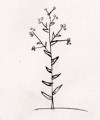 | 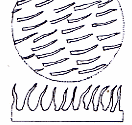 |
|
LEAVES: |
Character | Arrangement | Attachment | Venation |
Description | | | |
General
Picture |  | 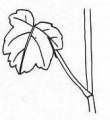 |  |
| |
Character | Leaf Shape | Leaf Margin | Remarks |
Description | | | Leaf Lobes Triangular, with a bluntly-pointed apex. |
General
Picture |  | 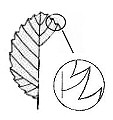 |  |
|
FLOWERS: |
Character | Colour | Basic Flower Type | No. of Petals | No. of Sepals |
Description | Yellow | | 4 Free, slender (3 times long as wide. | 4 Free. |
General
Picture | | 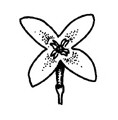 |  |  |
| |
Character | Inflorescence | Description | Ovary | Stamens |
Description | | The perianth consists of 4 erect free sepals, and 4 narrow, yellow petals arranged perpendicular to each other (cross-shaped). The reproductive organs consists of 6 stamens and a central pistil with a swollen style. | | |
General
Picture |  |  | 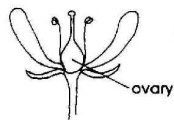 | 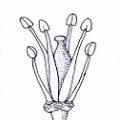 |
| |
Character | Scent | Average Flower Size | Pollen Colour | Other Notes |
Description | Faint Faint sewwt smell is given off from the flowers. | 6-10mm | Yellow | - |
|
SEEDS: |
Character | No. Per Fruit | Shape | Size | Colour |
Description | 10-20 | Circular Rounded and flattened as a coin. | 1-2mm | Light brown |
General
Picture |  |  |  |  |
|
FRUIT AND OTHER BOTANICAL DATA: |
Character | Fruit Type | Colour of Fruit | Subterranean Parts | Other Notes |
Description | | Beige Green when unripe. | | - |
General
Picture |  |  |  |  |
|
|
| Plant description and characters | |
Life Cycle: | Annual. |
Growth Form: | THEROPHYTE (annual plants, herbaceous) |
Habitat: | Roadsides and lanes in countryside especially besides arable land and near rocky wasteland. |
Frequency: | Frequent |
Localities in Malta: | Locally frequent besides cultivated and arable land at Dingli, Rabat, Siggiewi, Ta' Qali and Ghajn Tuffieha (Xaghra l-Hamra). |
Plant Height: | 40-100cm. |
| Mar-Jun |
Protection in Malta: | Not legally protected till the last update of this website (2/Mar/2022) |
Red List 1989: | Not listed in the Red Data Book of the Maltese Islands |
Poison: | |
An erect, herbaceous annual or biennial which is found close to arable sites. When young, the plant forms a basal rosette of leaves, but later an erect stem is formed and this give rise to the numerous flowering branches. Pilosity is variable but generally it is abundant towards the flowering parts of the plant.
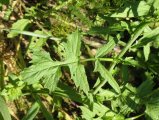 The leaves are pinnatisect (lobes that are cut up to the midrib), 12-18cm long, irregularly serrate, and petiolated. The leaves can be divided into two types, those forming the basal rosette, and those present on the stem (=cauline leaves). The leaves of the basal rosette are the largest, with 4-6 pairs of triangular-shaped lateral lobes, and a large apical lobe (often 3-lobed itself) that is broader and somehow truncate at the tip. The cauline leaves have a much reduced petiole (the upermost being subsessile), with 2-4 lateral lobes, also triangular-lanceolate in shape, and a larger apical lobe more or less lanceolate with an acute tip. The leaves are pinnatisect (lobes that are cut up to the midrib), 12-18cm long, irregularly serrate, and petiolated. The leaves can be divided into two types, those forming the basal rosette, and those present on the stem (=cauline leaves). The leaves of the basal rosette are the largest, with 4-6 pairs of triangular-shaped lateral lobes, and a large apical lobe (often 3-lobed itself) that is broader and somehow truncate at the tip. The cauline leaves have a much reduced petiole (the upermost being subsessile), with 2-4 lateral lobes, also triangular-lanceolate in shape, and a larger apical lobe more or less lanceolate with an acute tip.
The flowering part of adult plants consists of numerous, long, straight flowering branches that are at an obtuse angle to the parent stem - commonly found branched at perpendicular angles. The inflorescence is a raceme at the very end of the flowering branch with flowers borne in crowded clusters. The rest of the branch consists of developing fruit, wuth the mature ones towards the base of the flowering branch. No bracts are prsent.
The perianth consists of 4 erect, narrow sepals, about 2-3mm long and 4 slender yellow petals, that are about 3 times long as broad. Petals never overlap, and are arranged diagonally. Flowers are faintly sweet scented and measure an average of 8mm across.
The reproductive parts consists of 6 stamens with extrorse yellow anthers. They are arranged as 4 long central stamens and 2 lateral and shorter. The pistil is found at the centre and contains a simple style and swollen stigma
 The fruit is a rather short siliqua - 10-15mm long, circular in cross section, linear shape with a tapering, beakless end. It is found appressed to the parent stem. The 2 valves (outer wall) of the fruit are hairy. The fruit can hold up to 20 small brown seeds about 1.5mm in diameter. The fruit is a rather short siliqua - 10-15mm long, circular in cross section, linear shape with a tapering, beakless end. It is found appressed to the parent stem. The 2 valves (outer wall) of the fruit are hairy. The fruit can hold up to 20 small brown seeds about 1.5mm in diameter.
|
|
| Information, uses and other details |
Origin and Nativity
The plant originated in South Europe and with time it got widespread and naturalised throughout most regions such as most of Europe up to Scandinavia, UK and Ireland, North Africa (eg: Algeria, Libya, etc ), Asia (eg: Iran, Saudi Arabia, Syria, Russia) North America, Canada and elsewhere. [WWW-26], [WWW-63]
Propagation and Cultivation
An easily grown plant, it succeeds in most soils but prefers a moist to dry acid to alkaline soil in full sun or light shade [238]. The plant has a peculiar aptitude for collecting and retaining dust [4]. This means that when growing near roads or other polluted places the leaves are seldom edible [KF].
It can be sown directly from seeds in situ without need of transplant [238].
History
Its virtues were already known by speakers and singers but it is especially after the Rebirth that it finds its fame. It is told that at the 16th century a French doctor-botanist returned his voice to a child of chorus. The plant remained famous among singers and choir children in France. [WWW-64]
This plant was then named by the French the 'Singer's Plant,' and has been considered up to the time of Louis XIV an infallible remedy for loss of voice. Racine, in writing to Boileau, recommends him to try the syrup of Erysimum in order to be cured of voicelessness. A strong infusion of the whole plant used to be taken in former days for all diseases of the throat. [WWW-03]
Edible Uses
Young shoots - raw or cooked [2, 9, 85]. A bitter cabbage-like flavour, they are used as a flavouring in salads or cooked as a potherb [183, KF]. Seed - raw or cooked - can be ground into a powder and used as a gruel or as a mustard-like flavouring in soups etc [85, 183].
Its savour is a little acre and it appears that the English incorporate it in certain sauces which accompany fish. [WWW-18]
Medicinal Uses
Related Species
Sisymbrium sophia, or Flax weed, with bipinnately-divided leaves, the lobes oblong-linear, incised; pedicels four times the length of the calyx; petals smaller than the sepals; is a very intensely pungent plant. Its seeds have been recommended in gravel, and to remove worms; and a fomentation of the leaves as an application to obstinate ulcers [WWW-18]
Other Uses and Notes
- This plant was known by its synonym - Erysimum officinale [WWW-18]. There are 2 varieties described, thus the S. officinale var. officinale and S. officinale var. leiocarpum [KF]
- Alkaline secretions from the growing roots help to sweeten an acid soil [18].
- A food plant for the caterpillars of several butterfly and moth species. [30]
- Susceptible to Turnip yellow mosaic tymovirus. [WWW-16]
- The plant grows well where the ground contains nitrogen, because it is a nitrophile plant. [WWW-64]
- In Greek, Sisymbrium means cress which, like all the crucifers, contains sulphur compounds which are beneficial for the asthmatic and people with the irritated throat. [WWW-64]
Personal Observations
Identification remarks
The short appressed pods of the plant looks similar to a closely related plant - the Hirschfeldia incana and hence one can easily confuse the two plants. Below is a table which illustrates the main differences betwenn H. incana and S. officinale. [SM]
| Feature |
Hirschfeldia incana |
Sisymbrium officinale |
| Shape of leaf lobes |
The apical part is broad and rounded |
The apical part is acute and pointed |
| Leaf margin |
Crenate; teeth rounded and shallow |
Serrate; teeth triangular and well defined. |
| Flowering branches |
Spread out at about 45 degrees to the mother stem. |
Spread out at a more larger angle, the lower ones almost perpendicular. |
| Petals |
Nearly as long as broad, sub-orbicular |
Narrow, 2-3 times long as broad. |
| Siliqua (fruit) |
Glabrous and possess a swollen beak. |
Hairy and beakless |
|
|
| |

